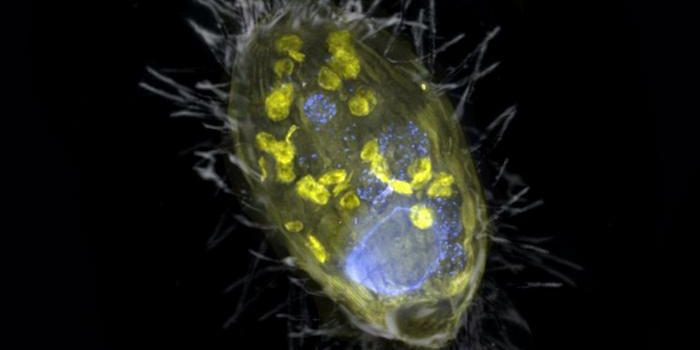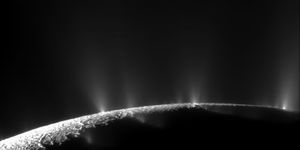The Science Behind Holiday Specs
Whether young or old, anyone can enjoy those fun holiday glasses that turn pinpoints of lights into fun shapes—snowflakes, stars, candy canes, and other fun holiday shapes.
They’re deceptively simple, usually just paper frames and paper-thin, translucent lenses, but there is no hint of what shape you’ll see when you put them on. So how do they transform shapeless lights into crystal clear snowflakes? Let’s dive into the science behind these fascinating specs.
These glasses rely on diffraction gratings. Diffraction is the process of splitting light; when waves run into an obstacle, the wavefront is altered.
Light is no exception. If you ever looked at brightly burning elements through special glasses that showed stripes of colors, you were probably looking through diffraction glasses. This is a common experiment and a simple way to visualize how spectroscopy works.
The resulting waves that come out the other side of an obstacle create a diffraction pattern to create more complex diffraction patterns. A diffraction grating is a surface with multiple interferences, so light passing through many slits can separate it based on wavelength.
Holiday glasses utilize diffraction gratings to transform light into shapes.
A computer-generated diffraction grating creates the lenses. Using software, manufacturers generate an interference pattern that will bend the light into the desired shape. The pattern takes advantage of nodes and antinodes in the diffraction pattern, the parts where the lights amplify and cancel out each other.
Once the pattern is created, it can be etched onto the surface of the lens. If you were to look at the lenses under a microscope, you could find the repeated pattern that makes up the diffraction grating.
This only works on pinpoints of lights, so these glasses are perfect for the holiday season, where string lights are plentiful.
So, next time you put on a pair of glasses this holiday season, take a closer look at the lenses! You might be surprised at what you find.
Sources: HowStufWorks, Arbor Scientific, Newport








